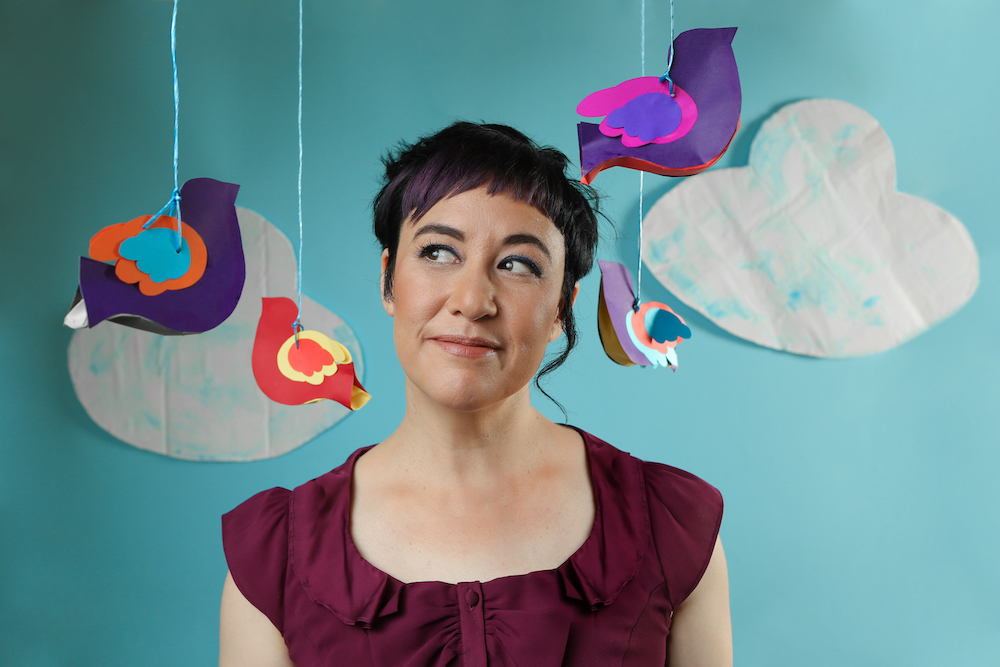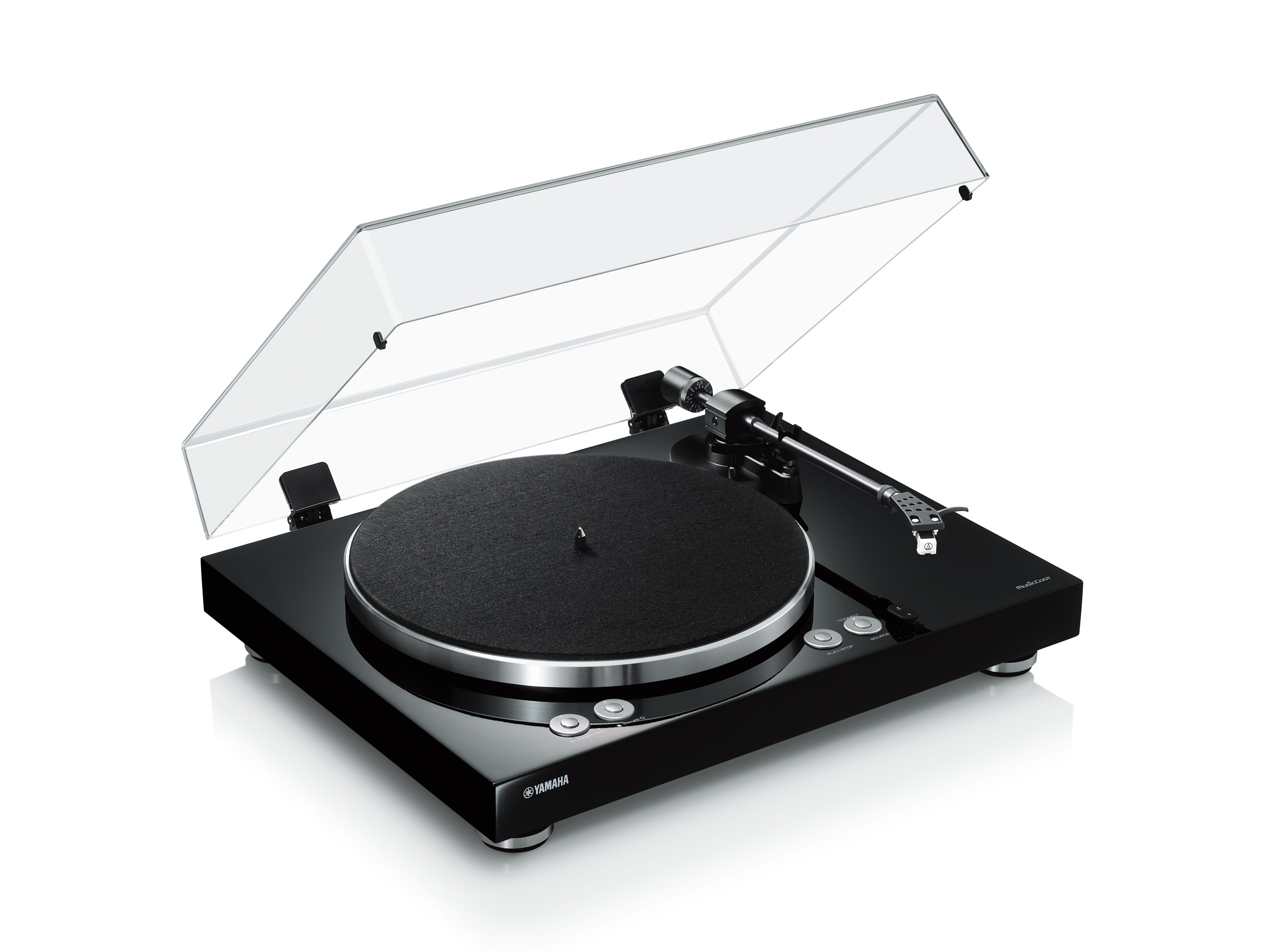With CD sales waning and downloads already going the way of the cassette tape, it’s easy to imagine a recording industry in decline. Figures from the Australian Recording Industry Association paint a different picture, however, with the industry notching up four years of consecutive growth.

It’s substantial, too – ARIA’s 2018 wholesale figures show 12.26 percent growth on the previous year. What’s driving this? Changing listening habits have seen online streaming become the dominant way people listen to music, now accounting for 71.4 percent of overall market value in Australia.
Streaming is essentially the on-demand consumption of audio or video that allows the content to begin playing while the remainder of the file is being downloaded – the most famous example is YouTube, but streaming has become ubiquitous in people’s lives with services like Netflix and Stan disrupting the television industry, and music players like Spotify, Apple Music and others changing the way people listen to music. While some services are free – with advertising – many now follow a subscription model, allowing users access to vast catalogues of music for a monthly fee (usually less than the price of a single physical CD per month), with different payment tiers for multiple users or higher audio quality.
So what do these changes mean for the classical music industry, artists and listeners? The last decade has seen a profound shift away from physical media and towards streaming, explains ABC Classic and ABC Jazz Label Manager Hugh Robertson. “It’s a matter of convenience, I think – when you can carry almost every album ever recorded in your pocket at all times, that’s a very attractive proposition,” he says.
While classical music listeners haven’t embraced streaming with the same gusto as other sectors of the music world, they are starting to catch on. Research published by MIDiA Research (commissioned by classical music streaming service IDAGIO) showed classical music streaming revenue was up 46 percent in 2018. “Classical fans haven’t quite gone with the trends so much – certainly classical CD sales are still significant, and they haven’t rushed to streaming the way that other audiences have,” Robertson says. “And classical hasn’t seen the huge movement towards vinyl sales that other genres have. Our audience is certainly an atypical bunch!”
“I think it has a lot to do with the specifics of classical music as a genre. Streaming is a very immediate platform, and you can jump from hit song to hit song effortlessly,” he says. “But classical isn’t quite so easily consumed, and it demands more time, and more attention. And whether it’s a piece you don’t know or one of your favourites, liner notes are a great way to learn more about what you are listening to – that’s something that digital platforms don’t currently offer.”
But things are changing, with several new players entering the market catering specifically to classical music.
THE PLAYERS
Spotify and Apple Music are among the most popular music streaming services – with YouTube the largest overall – but there are myriad options, including Deezer, Amazon Music Unlimited, Google Play Music and TIDAL, offering variations in catalogue, sound quality and user experience. While classical music can be found on these services, they are clearly built with pop in mind.
Hong Kong-based record label Naxos’s streaming service, Naxos Music Library, has been around since 2002, with a vast catalogue catering primarily to libraries and universities – “we were way ahead of the rest of the streaming industry,” says founder Klaus Heymann – but two new players have emerged, each offering a Spotify equivalent catering exclusively to lovers of classical music.
 Primephonic CEO Thomas Steffens
Primephonic CEO Thomas Steffens
Thomas Steffens says “frustration” was the main driver behind Dutch-American start-up Primephonic, which launched in Australia in July as part of a global roll-out. He and a group of “mid-30s classical music lovers” were dissatisfied with the way Spotify, “so great on pop music”, was handling classical. “We had these daily frustrations on search, or recommendations, on audio quality and information,” he says. “We’re moving towards a streaming-only world and at the same time classical music is heavily underrepresented in that streaming domain,” Steffens explains, offering figures that have classical at five percent of music consumption worldwide, but only one percent of streaming consumption (and less than half a percent in streaming royalties). “If this continues, classical music will just lose its relevance, will be marginalised and will just not be visible and accessible for the next streaming-only generation.”
Steffens met a wealthy classical music lover who shared his concerns and was willing to fund a solution, so he started Primephonic with co-founder Veronica Neo.
 IDAGIO CEO Till Janczukowicz
IDAGIO CEO Till Janczukowicz
“Classical music is kind of in the stone age,” says Till Janczukowicz, who founded IDAGIO after 25 years as an artist manager, producer and promoter, working with clients like Seiji Ozawa and organising tours for the Vienna and Berlin Philharmonic Orchestras. He saw a market in which classical music was competing for attention with the Internet, Netflix, and gaming. “Our competition is highly technology and data driven,” he says. “Based on user insights and data.”
Janczukowicz also saw his clients weren’t cutting through on platforms like Spotify. So along with Christoph Lang he launched, at the 2015 Salzburg Festival, “a streaming service for classical music that really caters better for audiences and for musicians.”
TCHAIKOVSKY OR TCHAIKOWSKY?
What makes services like Spotify so awkward for classical music? One of the problems is finding the music you want. While pop requires three pieces of information for each track – name, artist and album – classical requires more details, such as movement, composer, orchestra or conductor. “The data model and the metadata behind the mainstream services like Spotify, Apple, and the others, they are not made for classical music,” says Janczukowicz.
The problem is typified by searching “Mozart Symphony 5”. “At Spotify you’ll get 39, 40, and 41 but not Symphony No 5,” Steffens says, explaining that Spotify picks up their Köshel numbers. “It doesn’t have the intelligence to recognise the structure of classical music.”
This is a stumbling block for listeners even before they run into problems like the different spellings of Tchaikovsky. “We have ten musicologists who have been working for two years, full time to really restructure all the data on classical music, to be able to allow much better search and recommendations,” Steffens says.
While each operates slightly differently, it’s the detailed track information and search functionality that really sets Primephonic, IDAGIO and Naxos Music Library apart.
QUALITY OR QUANTITY?
With higher Internet speeds, there is no technological impediment to streaming audio at CD quality, or even higher, but streaming services have a wide range of offerings when it comes to quality. On their base tiers, services use “lossy” file formats, like MP3, which means some detail is lost when the files are compressed. The maximum quality Spotify offers on its paid tier is approximately 320kbps – but there are rumours that the major streaming services are experimenting with CD quality streaming and higher.
“Spotify targets young people who listen to pop music on the phone,” says Steffens. “In that setting audio quality is not a big thing, which is why they compress it and lower the data and capacity. But classical music is more delicate – think about the soprano going for the highest note, or a Mahler symphony where there’s 100 instruments performing at the same time, that nuance, subtleness and multilayered-ness gets lost in the compression of MP3.”
Primephonic offers the equivalent of Spotify’s highest quality as its base rate, with 24bit “lossless” streaming (higher than CD quality) available on its Platinum tier.
Janczukowicz says the “best decision“ IDAGIO made was offering CD quality streaming, with between 20 and 30 percent of users willing to pay extra for it.
Naxos offers two streaming tiers, with audio quality analogous to that offered by Spotify.
For artists like pianist and composer Sally Whitwell, audio quality is a big concern, particularly when she is writing music. “The broader shapes of my compositions really rely on a pretty broad range of dynamics, which on Spotify feels compressed to within an inch of its life, so it actually results in a diminished emotional return,” she says. “I’ve been thinking about it a lot in advance of writing a new duo for myself and Australian guitarist Matt Withers. It’s making me think differently compositionally, that this work might be much more about texture and colour and less about dynamics. So it’s even affecting my creative output.”
POPULAR VS OBSCURE: CURATING CLASSICAL
One of the great features of streaming is not just the ability to build your own playlists (replacing record collecting, for many), but also to listen to playlists curated by others. One of the gripes with the major streamers is that their playlists – and the ‘recommendations’ that suggest new music based on previous behaviour – aren’t relevant to classical music.
In my own experience, Spotify will see I’m listening to classical music and recommend Mozart or Beethoven, the Moonlight Sonata or the Brandenburg Concertos – fine works, to be sure, but serious classical listeners don’t need a recommendation to tell them that. “They want to get recommended stuff that they don’t know yet,” Steffens says. “That’s something that algorithms cannot identify because algorithms are based on popularity.”
“We still do a lot of our curations by hand,” Steffens says, citing Primephonic’s ‘Discover’ playlists, which recommend unusual works by popular composers. Primephonic also has a series called ‘Hidden Gems’. “The rule for it is if two people in the office know it then it is no longer a hidden gem,” he says.
Both Primephonic and IDAGIO offer playlists by artists, such as Ray Chen’s ‘My Golden Age Top Five’ on IDAGIO or Michael Fabiano’s ‘Favourites’ on Primephonic.
Janczukowicz gives the example of the Berlin or Vienna Philharmonic back catalogues, each with thousands of recordings. “Who is better positioned to curate and to talk about it than the musicians of the orchestra themselves?”
“First of all, it’s promotion for these artists, because it enriches their profile, and at the same time, it’s valuable content for users, because you get really first hand insight,” he says. “From our perspective, it is original content that distinguishes IDAGIO from any other platform. And I think this is key.”
For Naxos, too, it’s the extra-musical content that sets it apart. “Our subscription price is double what you have to pay Apple Music or Spotify,” Heymann says. “We can justify that because we have a lot of non-music content on it. We have pronunciation guides, guided tours, interactive dictionary, all kinds of things. So it’s not really aimed at the normal consumer but at universities, libraries, professional musicians.”
THE ARTISTS
 Composer and pianist Sally Whitwell. Photo © Maja Baska
Composer and pianist Sally Whitwell. Photo © Maja Baska
But what do changing listening habits mean for artists? “The biggest advantage is the immediacy of listener statistics,” says Whitwell. “I can log into my Spotify Artist app any time and see how many people are listening to any of my tracks over the last 24 hours, the last week, the last month. I can find out where they are (I’m apparently popular in New York and Mexico City?), their gender, their age, and how they discovered my music. When you’re selling CDs you can’t get any of that data.”
A disadvantage is not being able to use CDs as calling cards. “The last few times I’ve done radio interviews, they’ve refused the gift of a CD because I can actually get more royalties if they just stream it,” she says. “It’s logical I suppose, but in my heart it feels like a nicer gift if it’s a physical product. And then there’s the whole thing about the liner notes, which I always write myself and spend a good deal of time putting together. Very few people will read those if they’re not listening to physical CDs.”
The changing industry has also had an impact on artists’ hip pockets, and with artists in mind, Primephonic and IDAGIO have implemented pay-per-second models which they describe as fairer than the pay-per-play model used by the major services, which favours shorter tracks. “The bottom has pretty much fallen out of the industry, and it’s played out for me in that the advance I receive ahead of recording an album is much, much less,” says Whitwell. “But the ABC is really pretty canny about the situation with streaming and earning as many royalties as possible for their artists, for which I am very grateful.”
“At the moment, we certainly aren’t seeing the same increase in revenue from streaming that non-classical labels are,” Robertson says. “But we are confident that classical audiences will eventually move to streaming in far greater numbers, and when they do we will be there to welcome them with open arms!”
THE OTHER SIDE
There are several labels abstaining from streaming. Australian label Tall Poppies has been “massively affected” by changes to the music industry, says founder Belinda Webster. “Almost no one buys CDs anymore.”
While Tall Poppies albums can be downloaded on iTunes, they aren’t available for streaming. “Mainly because the returns are so bad,” Webster says. “Someone is making the money on these services but it sure isn’t the originating labels or musicians. The creator is out in the cold.”
“It is almost impossible to recoup the costs of making a proper recording,” she says.
Move Records’ Martin Wright echoes her: “There is a lot of extra work required to get albums uploaded to the streaming platforms, and of the few we have put on Spotify the return has been a tiny fraction of very little.”
Hyperion in the UK is also steering clear of streaming. “We do have a few sampler albums available to stream on Apple Music,” says the label’s Head of Copyright & Licensing Eric Taylor, “but there are no plans to extend this to include the rest of our catalogue.”
In the typical payment model used by the big players, Taylor says, the label receives less than a UK penny per track. “This hardly offers a viable business model for the future of the recording industry: small, independent record labels cannot function on income of a few pence per album, much less invest in new recordings,” he says.
Hyperion releases are available on iTunes, but the label has its own download store on its website as well. “It takes very few customers to purchase an album – because it isn’t available to stream – to compensate for any lack of streaming income,” Taylor says. “Put another way, you would have to stream an album an awful lot of times to generate the same sort of revenue which equates to buying a single copy.”
THE FUTURE
So what does the future hold? “I see our audience as two distinct camps: we have our traditional audience, and we have a new audience emerging on digital platforms,” Robertson says. “Our traditional audience are enthusiastic classical music listeners, and will seek out the best in the genre on radio, at concerts, and on CD. The emerging digital audience are not necessarily classical natives, but have come to classical through a side door – video game music, film music, electronic music etc. So we are trying to appeal to two quite different audiences at the same time, which means we are doing a lot more recordings that appeal to that emerging audience.”
“There will certainly be more digital-only releases, but I don’t see this as a bad thing at all,” he says. “It means that everyone – artists, composers, labels – have much greater flexibility around releasing recordings, and it significantly reduces the barriers of entry. Producing a CD is an expensive business, and there is a conservatism inherent in any major undertaking like that. With digital releases we can do so much more – it’s a very exciting time!”
“It is obviously the future of our industry,” says Heymann. “It’s made the industry profitable again.”
Regardless of whether streaming is a good or bad thing for the industry – and it is likely both – it’s here to stay. “All I do know is that, anecdotally at least, streaming is already the primary way most younger people consume music,” Whitwell says. “If we want to develop or increase our audience, it’s a case of adapt-or-perish.”
A Brief History of (Classical Music) Streaming
The advent of the MP3 audio file – a format that compresses audio files to a fraction of the size of a CD track, with minimal (relatively speaking) loss of quality – in the 1990s changed the music industry. It paved the way for widespread piracy using file sharing services such as Napster, which blew a hole in the recorded music industry, as well as MP3 players, Apple’s iPods and eventually the iTunes Store, which really began the industry’s resuscitation through paid downloads in 2003, and led ultimately to streaming-on-demand.
While popular music streaming radio services like Pandora popularised the technology, foreshadowing the boom led by Spotify when it launched in 2008, the Naxos label was at the forefront of classical music streaming. “I think we invented the whole streaming business,” says Naxos founder Klaus Heymann. “We had our first streaming site in 1996, it was called hnh.com and made the whole Naxos and Marco Polo catalogue available for streaming, free of charge, track by track. At the time, it was basically a marketing tool.”
While the subscription Naxos Music Library has been a constant presence since it launched in 2002, new streaming services are popping up – Primephonic, which launched in 2014, and IDAGIO in 2015 – in response to demand for services that cater to the specific needs of classical music listeners.
What equipment will I need?
While the vital element to streaming is, of course, an Internet connection, there are myriad ways to go about it – and the sky’s the limit when it comes to audio quality. Streaming services are available through desktop and laptop computers – as programs that can be downloaded, or played in web browsers – as well as through apps on smartphones and tablets. “The most important thing is to hook up the computer, or whatever [you’re] listening on, to a decent speaker, and that will make streaming much more enjoyable,” says Naxos founder Klaus Heymann.
Connecting a pair of high end headphones through your device’s Stereo Jack, or using Bluetooth, is a relatively simple affair, but connecting your phone or device to your stereo speakers can be more complex. Most new stereo systems include built-in Bluetooth and Wi-Fi connections and increasingly – like televisions – they can be used as streaming devices themselves. If you bought a state of the art stereo system a few years ago, however, and aren’t yet looking to upgrade, there’s still no reason to listen to music through tinny laptop speakers – the right cable will have you connected in no time, or there are a number of devices on the market, such as the Sonos CONNECT, which can be connected to your existing hi-fi system, turning it into a streaming device. You can even use an Apple TV player to stream music, if you’ve got a good sound system hooked up to your television.
Alternatives to Streaming

Not keen to stream? You’re not out of options. “We certainly have no plans to stop producing CDs anytime soon,” ABC Classic & ABC Jazz label manager Hugh Robertson says. “There are still some great physical record stores – Fish Fine Music in Sydney, Readings in Melbourne, Songland in Canberra – and lots of options online, including Classics Direct who we work with very closely. Artists and orchestras often sell their CDs through their own websites, and you can almost always buy a CD at a concert. There is so much being released on CD still. Hope is not lost!”
While the retirement of Apple’s iTunes is causing much handwringing – and it is certainly the end of an era – it by no means signifies the end of digital downloads, they are available instead through the Music Store of the music app on macOS Catalina (the latest iteration of Apple’s operating system). The retirement of iTunes has simply seen the increasingly unwieldy catch-all app split up into separate apps for movies, podcasts, music and so on. Downloads are also available through the likes of Google and Amazon, while some labels, like Hyperion in the UK, have their own online store for downloads.
For those who want to consolidate their collection digitally, there is very affordable equipment out there that can be used to make digital copies of CDs you own for backup purposes (though in Australia you are legally required to retain the original CD and you cannot distribute the copy). And even the most rudimentary new LP players (starting from as little as $100) can connect to a computer if you want to digitise your old vinyl, while Yamaha’s new MusicCast VINYL 500 straddles both worlds by playing vinyl and streaming.
Getting started?
 ABC Classic and ABC Jazz Label Manager Hugh Robertson
ABC Classic and ABC Jazz Label Manager Hugh Robertson
Once you’re set up, how do you decide which service or services to pay for? “My advice would be to do your research and decide what is most important to you as a listener,” says ABC Classic’s Hugh Robertson. “Some platforms offer higher audio quality streaming, some let you create your own playlists, some have exclusive deals with certain labels so you can’t find those recordings anywhere else. Some are built specifically for classical music, and have invested heavily in ensuring you can find works by composer, by opus number etc. – which can be difficult on other platforms. There is now so much choice out there, you can find something that fits your desires as a listener.”
The most successful overall streaming service, Spotify, offers music for free (if you can bear to listen to a few advertisements) with ad-free listening and higher audio quality available if you subscribe, while other services allow you to sign up for a free trial period – but don’t forget to cancel the automatic payments if you’re not happy with the service! Some services – like Spotify and IDAGIO – allow subscribers to download music to listen to offline, particularly useful for those who want to listen while commuting or travelling.
“Most platforms offer a free trial, so you can test a few out before committing to one,” Robertson says. “And ABC Classic delivers our releases to just about every platform imaginable, so wherever you end up, we’ll be there waiting for you! If you don’t know where to start, try searching for one of your favourite Australian artists – the Grigoryan Brothers, say, or one of the symphony orchestras. That will let you see how albums are presented, and give you a sense of how the platform operates.”











Comments
Log in to join the conversation.